Understanding the mechanics of machinery may often lead us down a rabbit hole of technical terms and complex concepts. Among these, one significant component that often comes up is the ‘slip ring’. More specifically, the brass slip ring serves as a vital cog in the efficient functioning of various electrical devices and systems prevalent in numerous industries.
Essentially, a brass slip ring, also known as a rotary electrical joint, allows the transmission of power and electrical signals from a stationary component to a rotating one. Made primarily of brass, a material praised for its excellent electrical conductivity and resistance to wear and tear, these slip rings come in a plethora of designs to accommodate a myriad of application scenarios.
From everyday-use applications such as rotating doors, wind turbines, and MRI scanners, to highly specialized industrial machinery like excavators, bottling plants, and more – brass slip rings are invaluable for their ability to provide smooth and consistent power or signal transmission. Their robustness and versatility make them a staple in fields as diverse as the renewable energy sector, food and beverage industry, medical field, and even cutting-edge robotics.
As we delve into this comprehensive guide about brass slip rings, we’ll uncover their design intricacies, their importance in different industries, and how to best select, install, and maintain them. By the end of this journey, we hope to provide you with an in-depth understanding of brass slip rings: the unsung heroes maintaining seamless connections and making many of our modern conveniences possible.
Brass Slip Rings: Design and Construction
In the complex world of electrical and mechanical design, the selection of materials possesses a paramount influence on the performance and longevity of the final product. As such, the choice of brass in the composition of slip rings is both strategic and rooted in its advantageous properties. In this section, we delve into the design and construction of these essential components, highlighting the role of brass and the qualities that make it an ideal material.
At their core, brass slip rings are ingeniously simplistic. They feature four main components: a split brass ring, brushes that make contact with the ring, a housing that provides protection, and wedges to maintain brush pressure. The split brass ring, often referred to as the ‘rotor’, rotates while the brushes, made of a material like silver graphite, remain stationary. These brushes maintain contact with the rotating ring, thereby allowing the transmission of electrical signals or power.
Brass is the material of choice primarily for its excellent electrical conductivity. Electrons can move relatively freely through brass, enabling the efficient transmission of electrical signals. Importantly, this property remains consistent across a wide range of temperatures, making brass slip rings suitable for environments with temperature fluctuations.
Additionally, brass touts a high resistance to corrosion, a quality crucial to the durability of slip rings. Given the friction between the brushes and the rotating ring, many materials would degrade or rust over time – but not brass. This innate characteristic ensures brass slip rings can withstand extensive wear and tear, continuing to perform effectively even after prolonged periods of use.
Furthermore, brass is well-regarded for its ease of machining and overall durability. Its flexibility allows engineers to design slip rings in a variety of shapes and sizes without compromising the material’s structural integrity. This adaptability of brass underpins the broad range and versatility of brass slip ring designs available in the market.
In conclusion, the design, construction, and selection of brass as the primary material for slip rings are realities steeped in practicality and efficacious performance. Whether for its superb conductivity, corrosion resistance, or durability, brass showcases itself as a vital cornerstone in facilitating the seamless operation of various applications across multiple industries.
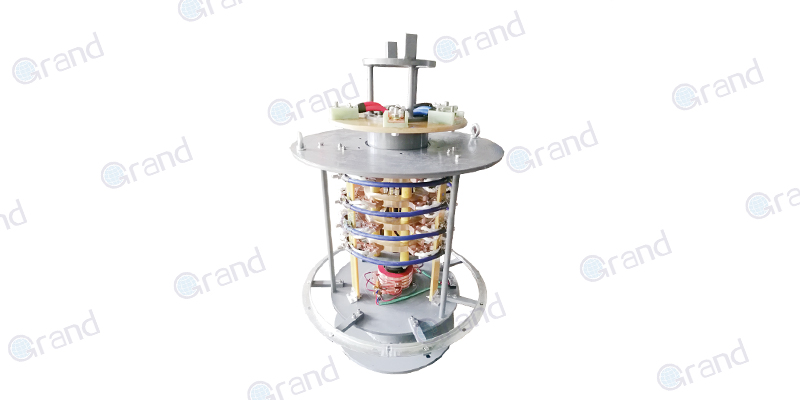
Brass Slip Rings: Types and Variants
The engineering world thrives on customization, especially when endeavors demand solutions tailored to specific requirements. This notion holds true in the realm of brass slip rings, where a broad spectrum of types, sizes, and variants exist, each designed to cater to the unique demands of different applications.
Capsule Slip Rings
These compact slip rings are designed for systems with size and weight limitations such as CCTV cameras, medical equipment, and small rotating systems. The brass ring is housed within a petite capsule, ensuring maximum functionality while maintaining a minimal footprint.
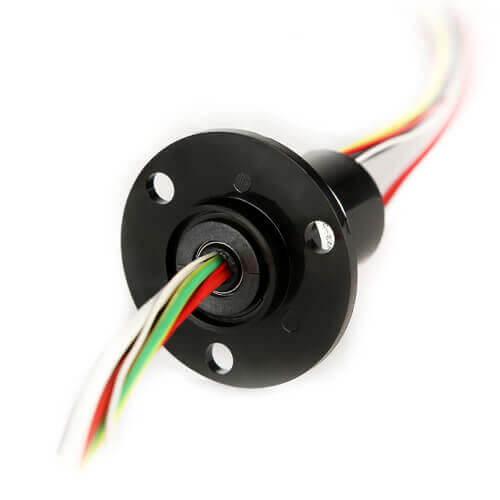
Through-Bore Slip Rings
Widely used in heavy machinery, these brass slip rings feature a hollow shaft or ‘through-bore’ at the center. This structural design enables the routing of hydraulic lines or shafts through the slip rings, leading to streamlined and space-efficient installations.
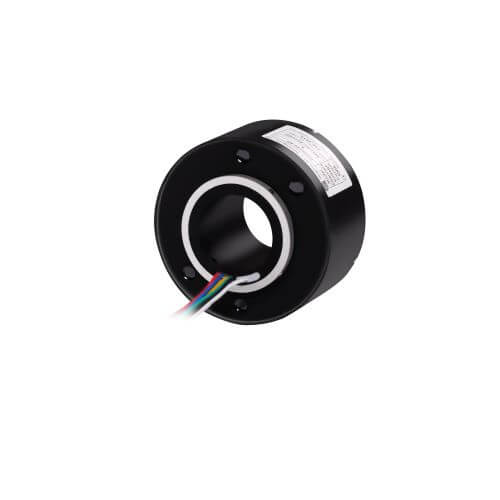
Pancake Slip Rings
As the name suggests, these slip rings have a flat, ‘pancake’ design. They are invaluable in applications where length is restricted but diameter is less of an issue. This type is commonly seen in applications like wind turbines and cable reels.

High-Temperature Slip Rings
Designed to resist extreme temperatures, these brass slip rings are used in environments such as bakeries, steel plants, and other high-temperature industrial operations. They are built with special materials and insulation to lengthen their lifespan under harsh conditions.
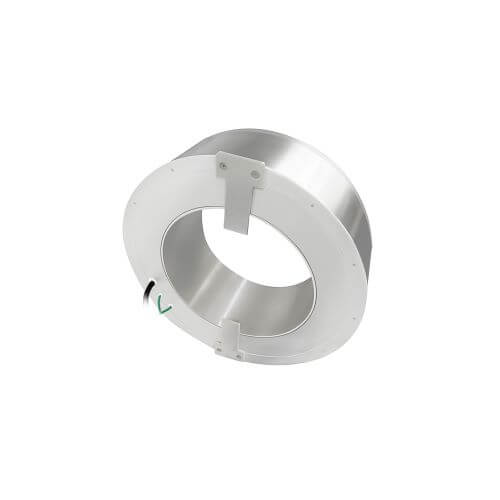
High-Speed Slip Rings
These slip rings prioritize reducing friction and heat at high rotational speeds. They are optimized through design modifications and the use of specific brushes and lubricants. Their applications range from the aerospace industry to high-speed data transmission.
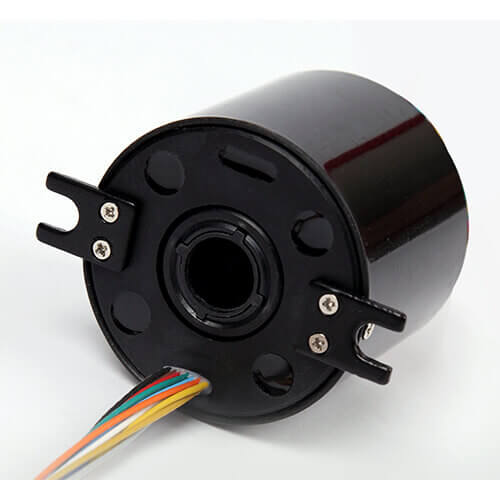
Every variant of brass slip ring exhibits its unique design and functional adaptations, reflecting the wide range of applications they are intended for. Size, speed, temperature tolerance, and more all contribute to the diverse selection of designs within the market.
This richness in diversity not only displays the versatility of brass slip rings but also their capacity to be engineered according to the specific requirements of the application. This element of customization substantially broadens the utility of brass slip rings, making them indispensable assets across a host of industries. The nuances in their design intricacies ensure an optimal balance between performance, adaptability, and durability, underscoring their fundamental role in ensuring seamless operations.
Brass Slip Rings: Application and Industries
The remarkable versatility and robustness of brass slip rings make them indispensable components across a myriad of industries. From harnessing renewable energy through wind turbines to maneuvering heavy machinery in construction zones and facilitating precision robotics in automation – these components play a pivotal role in maintaining continuous power or signal transmission. Let’s explore some of these applications in more detail:
Wind Energy
Brass slip rings are a critical component within wind turbines. They enable the transmission of electrical signals and power from the stationary part of the wind turbine (the tower) to the rotating portion (the blades and generator). These slip rings need to withstand varying climates, high rotational speeds, and round-the-clock operations, making the durability and conductivity of brass slip rings an ideal choice.

Heavy Machinery
In the realm of heavy machinery – such as cranes, excavators, or tunnel boring machines – brass slip rings play a crucial role. These machines often have parts that need to rotate 360 degrees while transferring power or signals, a task remarkably performed by brass slip rings. Their resistance to wear and tear, impressive durability, and excellent conductivity make them essential to the heavy machinery industry.
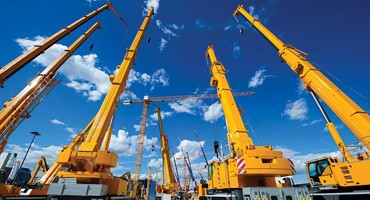
Automation
As automation technology continues to evolve, brass slip rings prove ever more vital. In automated production lines and robotic arms, for instance, these rings provide uninterrupted power and signal transfers between stationary bases and rotating components. Given the high-precision demands and high-speed operations often needed in such settings, the reliability and efficiency of brass slip rings are crucial.

Apart from these three sectors, brass slip rings find a home in a variety of other industries too – medical imaging devices such as CT scanners, process machinery in the food and beverage industry, rotational signs, and even amusement park rides!
The widespread versatility of brass slip rings is clearly an affirmation of their utility. By offering a solution for seamless and reliable power or signal transmission between stationary and rotating parts in various systems, they embody an essential requirement in modern machinery and electrical equipment. The varying sizes, designs, and types available further make them adaptable to a broad palette of applications, underscoring their fundamental role across numerous industries.
Brass Slip Rings: Why Brass Slip Rings?
When focusing on the advantages and trade-offs of different materials used in the manufacturing of slip rings, the benefits of brass as a choice material become abundantly clear. From cost-effectiveness and durability to ease of maintenance and superior electrical properties, brass slip rings stand tall against alternatives in maintaining efficient and uninterrupted system operations. Here’s an in-depth exploration of these perks:
Cost-Effectiveness
Undeniably, cost considerations often play a significant role in material selection. On this front, brass offers a competitive edge due to its cost-effectiveness. Compared to other metals with similar conductivity and corrosion-resistant properties, like copper or silver, brass offers a more budget-friendly alternative. Coupled with its superior performance attributes, this makes brass slip rings an economically wise choice.
Durability
In terms of durability, brass is renowned for its resistance to wear and tear. The nature of slip rings demands high endurance against friction-induced wear, as they continually make contact with brushes while in operation. Brass, with its unique physical properties and high resistance to corrosion, outperforms several other materials, ensuring a longer lifespan for the slip rings.
Ease of Maintenance
When it comes to maintenance, brass slip rings reign supreme. Given their resistance to corrosion, brass rings usually require less frequent cleaning or replacement than their counterparts made of other materials. This solidity translates into reduced maintenance costs and promotes higher system uptime, significantly improving operational efficiency.
Electrical Properties
One of the prime requisites of a slip ring is its ability to conduct electricity efficiently. Brass, with its excellent electrical conductivity, aligns perfectly with this requirement. This characteristic ensures continuous and effective transmission of power or signals, significantly reducing energy loss and maintaining the integrity of the transmitted signals.
Without a doubt, there are other materials available for constructing slip rings. However, the blend of superior electrical properties, durability, cost-effectiveness, and ease of maintenance offered by brass positions it as a standout choice in many applications. By virtue of these advantages, brass slip rings continue to bear the load of countless systems, ensuring they operate seamlessly and without interruption. The common consensus is clear: when it comes to reliable and efficient power or signal transmission between rotating and stationary components, brass slip rings prove hard to beat.
Brass Slip Rings: Selection Guide
Choosing the right brass slip ring for a particular application involves careful consideration of a range of factors. These determinants not only impact the efficacy of operations but also the longevity and reliability of the overall system. Below are some crucial factors one must consider during the selection process:
Size
When it comes to brass slip rings, size matters. The space restrictions of the intended application define the size of the slip ring required. Capsule slip rings might be ideal for space-constrained operations, while through-bore or ‘pancake’ slip rings might suit applications where length is restricted but there’s ample radial space.
Design
The design of the slip ring must efficiently cater to the mechanical requirements of the application. The choice between solid or through-bore design depends largely on whether the slip ring needs to accommodate any central shaft or additional components. Structural elements like these help streamline the application’s operation and design.
Compatibility
Brass slip rings need to be compatible with the environment in which they function. This encompasses factors like humidity, temperature, and exposure to dust or debris. For harsh environments, specialized slip rings such as high-temperature slip rings or sealed variants may be necessary.
Operational Speed
Different applications operate at various rotational speeds. Depending on the speed, the right type of slip ring and its relevant design considerations need to be chosen, such as specific brushes or lubricants for high-speed slip rings to reduce friction and heat.
Temperature Range
The range of operational temperatures the machinery will be exposed to has a significant impact on the choice of slip ring. Certain applications, especially those in challenging environments, may need slip rings that can withstand particularly high or low temperatures.
Load Capacity
Different applications demand different levels of electrical load capacity. The choice of slip ring must reflect the required current (amperage) and the voltage it will need to handle. High-load applications might require larger or specially designed slip rings, while smaller or capsule slip rings might suffice for lighter loads.
By making judicious use of these guided considerations, the selection process can yield a brass slip ring that fits the application like a glove, ensuring optimal performance and utilization. Ultimately, the mission is to select a brass slip ring that can seamlessly integrate into the existing system, guaranteeing longevity, reliability, and maximum system uptime.
Brass Slip Rings: Installation Tips and Best Practices
The installation and operation of brass slip rings serve as crucial steps in ensuring their functionality, robust performance, and longevity. Ideally executed by professionals, these processes can benefit immensely from adherence to a few insightful tips and best practices:
Pre-Installation Checks
Before installation, it is crucial to inspect the brass slip ring for any visible defects or irregularities. Minor anomalies like dents, scratches, or deformations could potentially affect the performance or lifespan of the slip ring. Additionally, it’s valuable to confirm that the chosen slip ring is compatible with the intended application – a mismatch could lead to operational difficulties or failure.
Correct Installation
Care must be taken to install the brass slip ring correctly according to its specific design. Whether it’s a through-bore, capsule, or pancake design, it should be installed in a way that maintains its structural integrity and function – for example, avoiding tension on the lead wires or over-tightening of screws.
Proper Ventilation
Care should be taken to ensure proper ventilation during the slip ring’s operation. Overheating can reduce lifespan and performance. If necessary, consider implementing active cooling measures, particularly in high-speed or high-load applications.
Regular Inspections and Maintenance
Regular inspections can help detect early signs of wear and tear, facilitating proactive maintenance. Pay particular attention to brushes and contact surfaces, which are subject to wear and might require cleaning or replacing. It’s also worth regularly checking the insulation for any signs of damage or degradation.
Optimal Operating Conditions
Wherever possible, strive to operate the slip ring within its recommended temperature range, rotational speed, and load capacity. Pushing the slip ring beyond its designed limits can lead to premature failure.
By following these guidelines, you can help ensure the proper installation and robust performance of brass slip rings in your application. Remember, the goal is not just to make the system operational, but to maximize its reliability and extend its operational life as much as possible. Each decision, from careful selection to judicious maintenance, contributes substantially towards realizing this goal. By adhering to these best practices, users can unleash the full potential of their brass slip rings, enabling seamless and efficient operations across countless cycles of use.
Brass Slip Rings: Potential Challenges and Troubleshooting
Despite the undeniable benefits of brass slip rings, they are, like any other component, subject to potential challenges and operational issues. In order to maintain optimal performance and extend the lifespan of your slip rings, being aware of these common concerns and knowing how to troubleshoot them is essential:
Wear and Tear
Issue: Over time, wear and tear of the contact surfaces between the brass slip ring and its brushes can arise, resulting in degraded signal quality or power transfer efficiency.
Troubleshooting: Regularly inspect and clean the contact surfaces to ensure minimal wear and proper electrical contact. If excessive wear is observed, consider replacing the brushes or slip ring, and verify that the brushes being used are suited for the slip ring material and the application’s operating conditions.
Vibration or Noise
Issue: Excessive vibration or noise during operation could indicate misalignment or an issue with the slip ring’s bearings.
Troubleshooting: Check the installation and alignment of the slip ring, ensuring that it is securely mounted and the bearings are in good condition. If the bearings show signs of wear or damage, it may be necessary to replace them. In some cases, external factors like mechanical imbalances in the surrounding systems could cause vibrations – be sure to examine these as well.
Intermittent Power or Signal Transmission
Issue: If power or signal transmission appears unreliable or intermittent, the root cause may be insufficient contact between the slip ring’s surface and the brushes or contamination of the contact surfaces.
Troubleshooting: Inspect the surfaces for signs of contaminants such as dirt, dust, or oxidation, and clean them with an appropriate solvent to restore proper contact. Ensure the brushes are in good condition and exert adequate pressure on the slip ring’s surface. If the issue persists, consider consulting the manufacturer or a qualified technician for further assistance.
Overheating
Issue: Overheating during operation can reduce the lifespan of the slip ring and degrade its performance.
Troubleshooting: Verify the operating conditions – such as rotational speed, load capacity, and temperature range – are within the slip ring’s specifications. Ensure proper ventilation and, if necessary, add active cooling measures. In some cases, using brushes with lower friction coefficients or lubricants may help mitigate this issue.
Awareness of such common obstacles and their respective troubleshooting strategies allows users to maintain their brass slip rings in peak condition. Nipping these challenges in the bud helps prevent long-term damage and potential system failures. Ultimately, investing time and energy in understanding and mitigating these issues is invaluable as it contributes to the longevity, reliability, and efficiency of the slip ring and the system it supports.
Brass Slip Rings: Maintenance and Care
The maintenance and care of a brass slip ring could qualify as the single most influential factor in extending its lifespan and optimizing its performance. As integral parts of many systems, slip rings experience a considerable amount of physical stress, making their upkeep crucial for the smooth and efficient operations of various machinery and applications. Here’s a closer focus on the key aspects:
Regular Inspections
Conducting regular checks is crucial for spotting early signs of wear and tear or other potential problems. The contact surfaces – where the brushes meet the slip ring – merit particular attention, as these are high wear-and-tear areas. Consistent monitoring can help identify when these parts require cleaning or replacements. Additionally, observe the insulation for any damage or degradation signs, which could compromise the system’s safe operation.
Cleaning
Brass slip rings and contact brushes must be kept clean to ensure effective signal or power transmission. Over time, accumulation of grime, dust, or oxidation can hamper efficient transfer. Cleaning these parts with a suitable cleaning agent at regular intervals can help maintain optimum functionality.
Brush Replacement
Brushes have a finite lifespan and will eventually need replacing due to wear. Regularly inspect them, noting any excessive wear or degradation in performance. When replacing brushes, use ones that are specifically designed for use with brass slip rings and align with the operational needs of your specific application to ensure effective performance and minimal wear.
Adhere to Operational Conditions
Operating the slip ring within its specified operational parameters – encompassing temperature, rotational speed, and load capacity – can significantly extend its lifespan. Abiding by these prescribed conditions can also enhance performance, as pushing a slip ring beyond its set limits increases wear and can cause premature failures.
By following this systematic approach to maintenance and care, the performance and life of brass slip rings can be optimized. It’s important to remember that these crucial components deserve attention and care. Just like any other electromechanical device, the service life of a brass slip ring can be considerably extended through regular maintenance and care, translating into significant long-term savings, optimal system performance, and minimized disruptions due to unexpected breakdowns.
Future Trends in Brass Slip Rings
As technology continues to evolve, brass slip rings are also expected to undergo parallel advancements. The demand for improved functionality, increased durability, and specifically tailored solutions for diverse industrial applications is continually influencing the research and development in this sector. Let’s look at the key emerging trends and potential future innovations that could redefine brass slip rings:
Enhanced Material Engineering
Advances in material engineering technologies have the potential to further enhance the qualities of brass or create new brass alloys. These advancements could result in increased conductivity, greater wear resistance, and improved thermal properties. Combining brass with other metals or materials at the microscale can open doors to slip rings that are customized for more specialty applications than ever before.
Integration with Smart Technologies
Smart technologies, including IoT (Internet of Things), are gradually permeating industrial components. Future brass slip rings may incorporate sensors and connectivity capabilities, allowing for real-time monitoring of wear, temperature, and performance. This real-time analysis could facilitate predictive maintenance, significantly extending the lifespan of the slip ring and improving the reliability of the systems it supports.
Miniaturization
Given the trend of minimizing mechanical systems in various technology sectors, the miniaturization of brass slip rings might be forthcoming. These smaller, yet equally effective, slip rings could cater to a broader array of applications, even in spaces where size or weight restrictions were previously a barrier.
Advanced Manufacturing Techniques
Sophisticated manufacturing techniques such as 3D printing have already begun to influence the production of complex machinery components. As these techniques become more prevalent, we may see brass slip rings fabricated with such precision and complexity that they’re better suited to specific applications, driving down costs and improving overall efficiency.
Overall, the future of brass slip rings holds immense promise, propelled by persistent trends in efficient and advanced technology. Research and development endeavors are continuously pushing the boundaries of what’s possible with these critical mechanical components. The resultant innovations will undoubtedly lead to better-performing, longer-lasting, and more versatile brass slip rings, capable of meeting a wide variety of industrial and technological needs.
Conclusion
Brass slip rings play a vital role in various industries, providing a reliable connection for power and data transfer between stationary and rotating components. With their excellent design, durability, and cost-effectiveness, brass slip rings are expected to remain a popular choice in many sectors, including wind energy, heavy machinery, and automation. By understanding how to select, install, and maintain brass slip rings, users can optimize their performance and extend their lifespan, ultimately benefiting from the numerous advantages these versatile components provide.
FAQs about Brass Slip Rings
As you continue your exploration of brass slip rings, certain questions may arise. Compiling several commonly asked questions can help clear some doubts and provide further clarity. Here are some answers to frequently asked questions about brass slip rings:
Q: Why are slip rings necessary in certain applications?
A: In applications where uninterrupted electrical signal or power transmission is needed between stationary and rotating parts, slip rings act as the bridge to reliably accomplish this without tangling wires. Frequently used in radar systems, wind turbines, and rotary engines, they enhance the flexible rotation of structures that otherwise could be hindered by static wiring.
Q: Why is brass a common choice for slip rings?
A: Brass provides a good combination of electrical conductivity and resistance to wear, making it a popular choice for slip rings. Its intrinsic properties of corrosion resistance and malleability increase the physical robustness and longevity of these slip rings, thereby enhancing system reliability.
Q: How long does a brass slip ring last?
A: The lifespan of a brass slip ring largely depends on its operating conditions, including load, speed, and environmental factors. With proper maintenance and care within its operating parameters, a brass slip ring can last many years. However, to ensure peak performance, certain parts (like brushes) may require replacement over time due to normal wear.
Q: Can brass slip rings operate in extreme temperatures?
A: While brass slip rings can endure a wide range of temperatures, extremes on either end can affect their performance. For applications that expect to encounter extremely high or low temperatures, specialized slip rings designed to withstand such conditions are recommended. Always refer to the manufacturer’s specifications to determine the suitable temperature limits.
Q: How can I reduce wear and tear on my brass slip ring?
A: Keeping the slip ring clean, ensuring proper ventilation, regularly inspecting for wear, and using suitable brushes can help reduce the rate of wear and tear. Operating within stated rotational speeds and load capacities also contributes to longer equipment life by mitigating extra physical stress.
See What We Can Do
